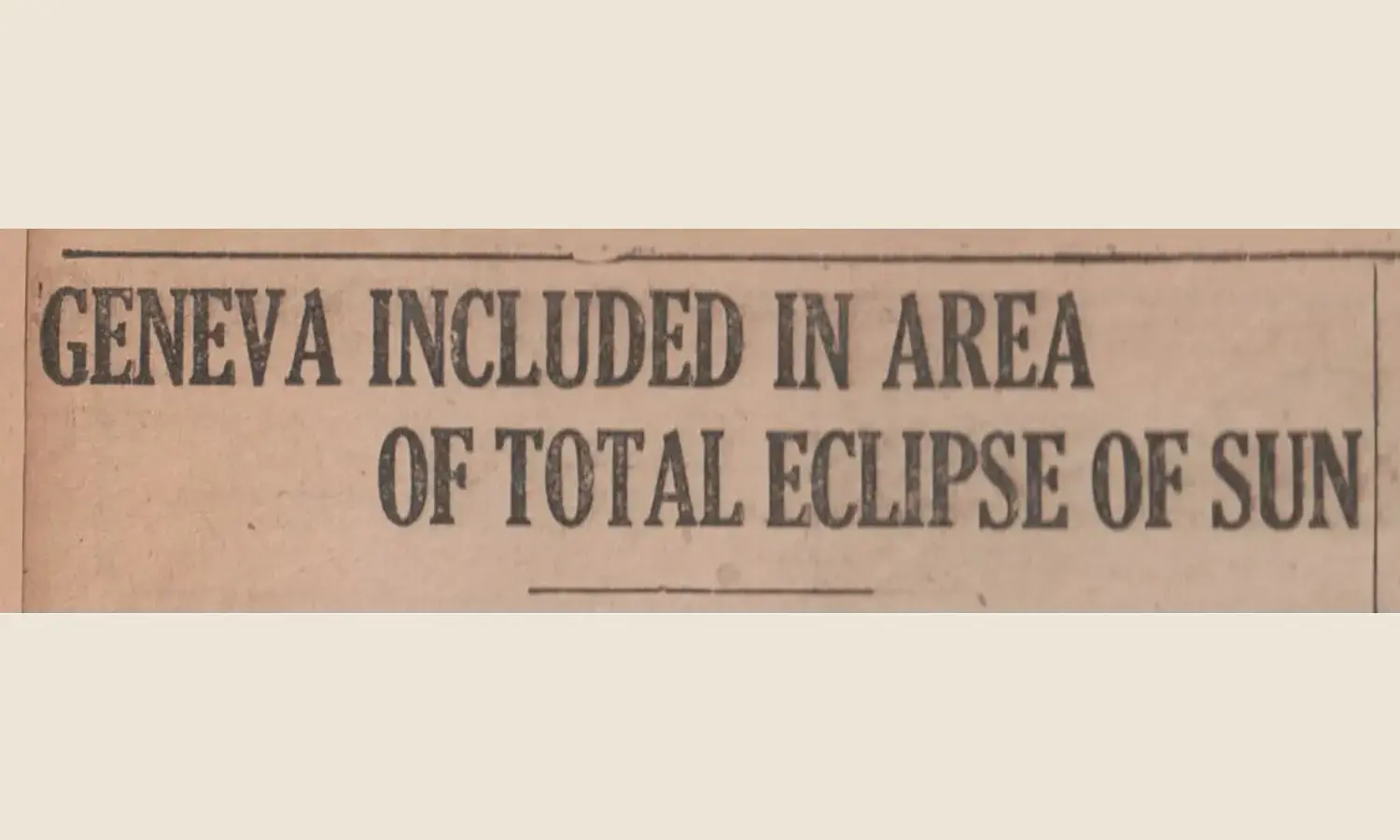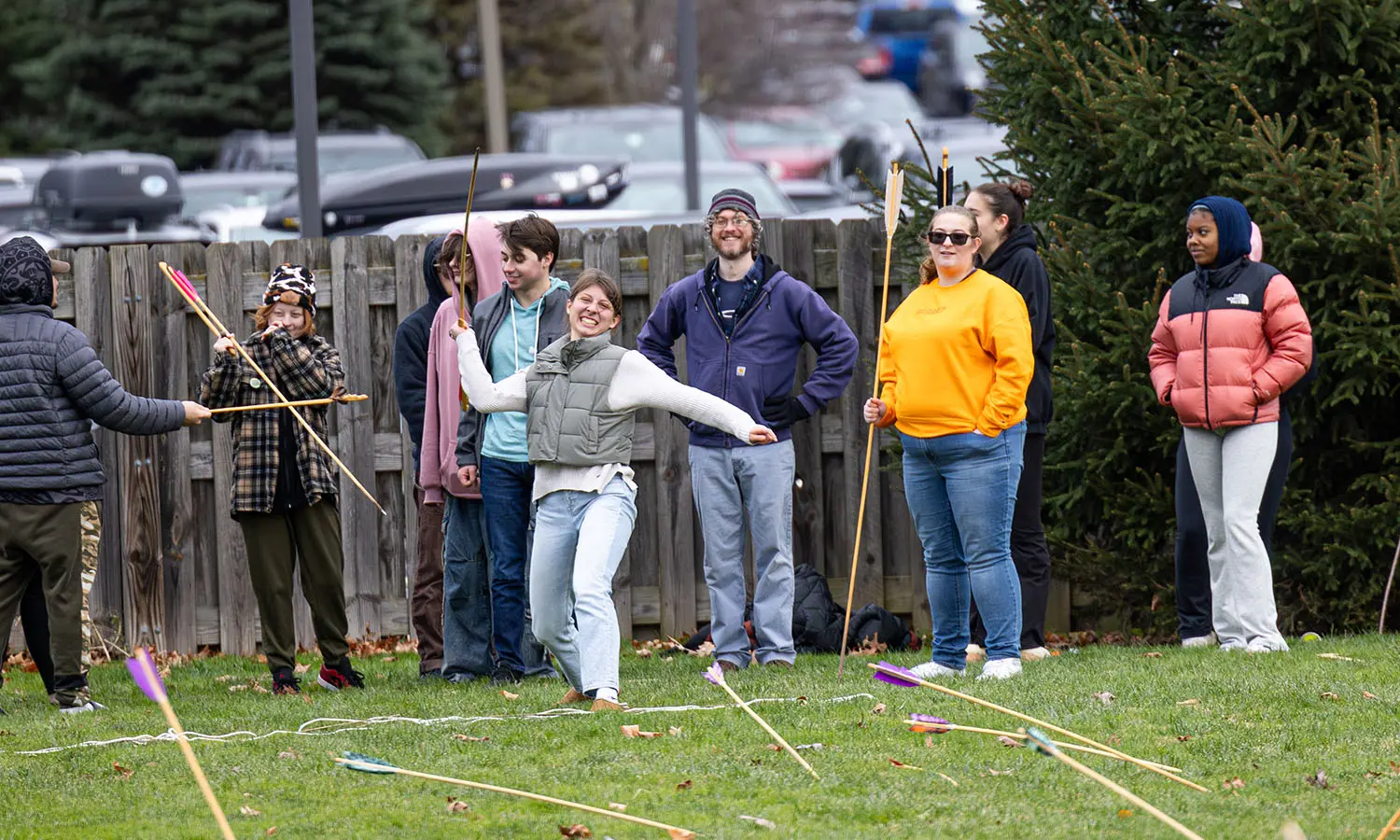
HWS News
13 March 2024 • STEM The Total Solar Eclipse of 1925
Ahead of this spring’s eclipse, an HWS Archives exhibit looks back at the last one to pass over campus — and how the planned observation went awry.
Nearly 100 years ago, Geneva, N.Y., was in the path of a total solar eclipse for the first time since the 19th century. As HWS prepares for the 2024 total eclipse on April 8, Archivist and Special Collections Librarian Brandon Moblo has curated a digital exhibit tracing the events of the January 1925 eclipse and the complications of observing it.
“There were two challenges to a winter morning eclipse: how low in the sky the sun would be, and the possibility of bad weather,” as the exhibit notes.

Joining the HWS campus community for the observation was a group of astronomers from the University of Michigan, who had planned to use the Smith Observatory on campus as well as a hot air balloon they had brought to make observations in the event of any cloud cover.
“When the sun rose the morning of the eclipse, it was a mostly clear day,” according to the exhibit. “Fifteen minutes before totality, the sun entered a dark bank of clouds.… By the time the clouds cleared, the moment of totality had long ended.”
At the Smith Observatory, faculty and students were attempting to measure “the shadow bands cast on the Earth by the eclipse,” but “clouds eliminated any chance of successful measurements.”
As for the balloon, “students arrived in the early hours of the morning to assist with preparations and as the sun rose, several hundred Genevans arrived to witness the event.” Hopes were high but ultimately dashed thanks to a 35 mile-per-hour wind. The Geneva Daily Times wrote: “It was only by superhuman efforts that the balloon was kept on the ground at all.”
Read more about the 1925 eclipse and the history of astronomy at HWS.
Of note: The last solar eclipse that was visible in Geneva, N.Y. was in 1806.



